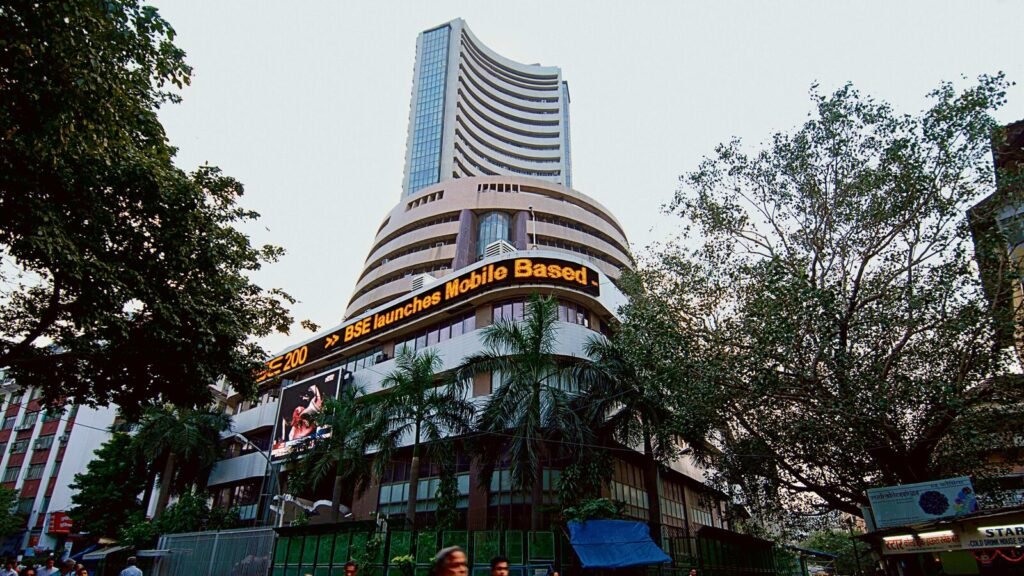Small-caps sneeze, markets catch a cold

Small-cap and midcap counters faced the brunt of the sell-off, on reports that a concerned market regulator had called for stress tests of mutual funds’ small cap schemes, and stoppage of incremental flows into small-cap schemes by a leading fund house.
The Nifty and Sensex fell a little over a percent each, breaching the psychological levels of 22000 and 73000 each to 21951.15 and 72304.88, as foreign portfolio investors (FPIs) and retail investors sold a provisional ₹1879.23 crore and ₹200 crore respectively.
However, the Nifty Midcap 150 and the Nifty Smallcap 250 fell more sharply by 1.8% and 1.89% each to 17749 and 14895.25, as panicky investors pulled out cash amid reports of regulatory concerns over too much money flowing into small-cap schemes.
Though domestic institutions offset the FPI selling with provisional purchases of ₹1827.45 crore, FPI selling in the derivatives market dragged down the indices, market analysts said.
A senior fund official confirmed that stress test results of its small-cap fund were shared with the regulator, which has been holding discussions with fund houses over the past three-four months on curbing excessive cash flows into small-cap schemes. Sebi’s concerns pertain to funds’ ability to cope with redemption pressures in small-cap stock counters with limited free float.
Coinciding with this, news of Kotak Mutual Fund placing temporary limits on investor subscription for units in its small-cap fund raised fears that other fund houses could also follow suit on valuation concerns.
Kotak MF has restricted lumpsum inflows into its smallcap fund to ₹2 lakh per PAN per month and systematic investment plan (SIP) flows to ₹25000 per PAN per month effective 4 March. Earlier, there were no such limits.
“A few stocks in the small- and mid-cap segment have multiplied, and strong momentum is taking them beyond the fair value of businesses,” Kotak MF wrote in a letter to its investors on 26 February, a copy of which Mint has seen. “While India’s market capitalisation/GDP is hovering at a lifetime high of ~130%, small caps’ market capitalisation to overall market capitalisation has climbed to ~18.9%. Historically, the proportion has been ~10%,” it said.
“Retail investors’ ownership of the small- cap segment has also become sizeable, crossing even institutional ownership in many stocks. Institutional investors, like mutual funds, exercise broad controls and invest in a disciplined manner. However, momentum chasing by investors, coupled with limited free float available in the market, has created valuation distortions in a few cases. Such experience is further boosting investors’ confidence, over-shadowing the caution required,” Kotak added.
Last July, Tata Mutual Fund halted lumpsum investments in its small cap fund, while continuing SIP investments. Nippon India Life Asset Management also stopped lumpsum investments into its small-cap fund that month, raising concerns of overvaluation.
“The small-cap universe is large enough to choose the right business at cheap valuation with a long term horizon,” said Chandraprakash Padiyar, senior fund manager (equities), Tata Mutual Fund. “It’s about picking the right stock as it is in the large-cap space, but I think why small-caps are more in news is because of the relative liquidity issue. What this means is if you sell a stock high, you might not get to enter later because of relatively lower free float.”
The biggest drags on the small-cap index were Suzlon Energy (down 13.77%), BSE 7.87%), HFCL (6.9%) , RBL Bank (5.7%) and NCC (5.7%) .
Nifty Smallcap 250 now trades at a trailing price to earnings multiple of 28.04 times against the five-year median of 25.93 times.
The Nifty losses were led by M&M, Wipro, IndusInd Bank, Maruti and Power Grid Corp, which fell between 2.7% and 4.4% ahead of the February futures and options contracts expiry on Thursday.
“With markets ruling near record highs in the expiry week, volatility was to be expected,” said Gaurang Shah, senior vice-president, Geojit Financial Services.
Jayesh Bhanushali, lead, research, IIFL Securities said he expects Nifty to get support at 21800 initially and to test 21200 in the March series of derivatives before recovering to test new highs.
